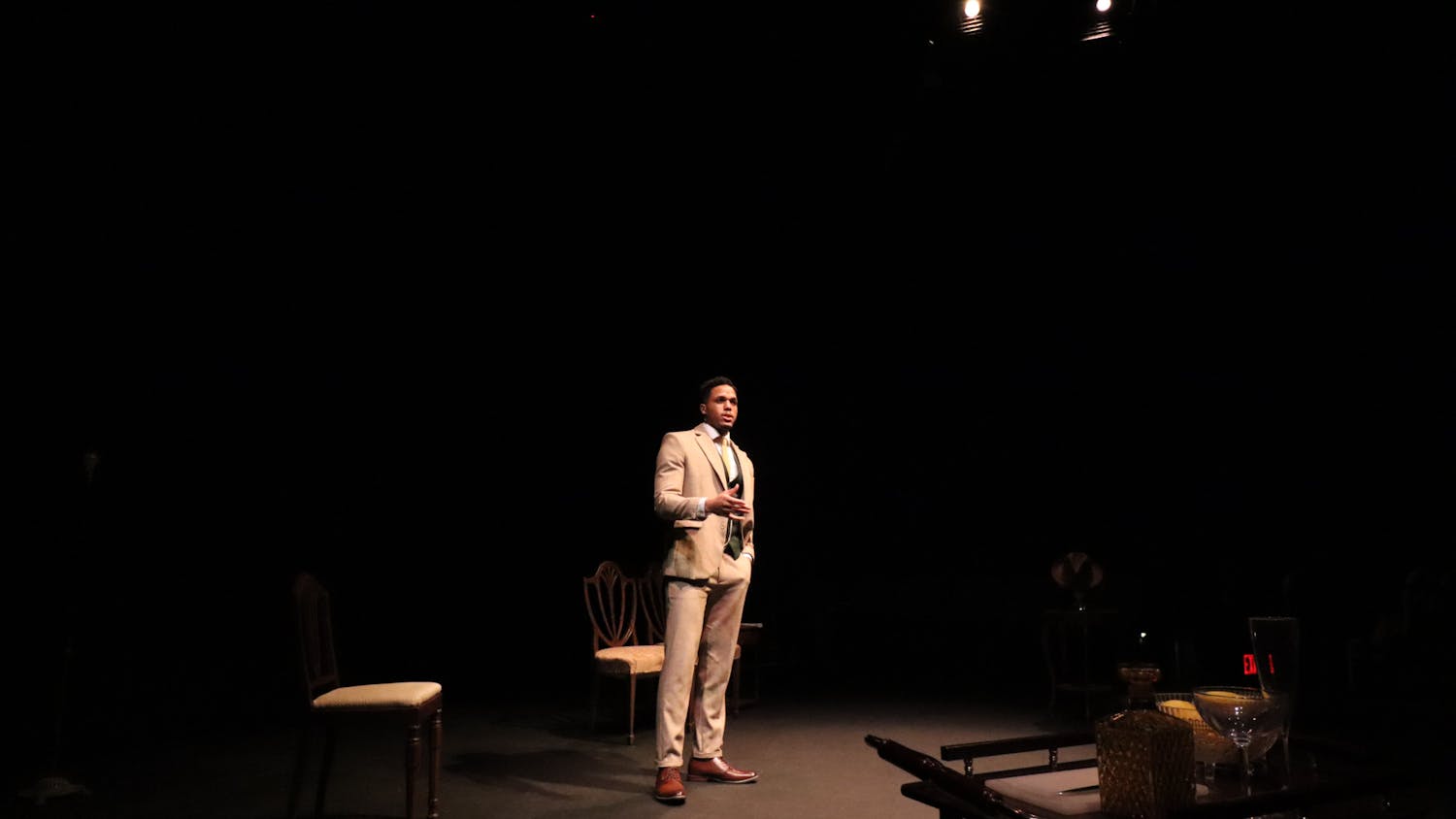One by one, casually dressed dancers took to the bare stage. In smart shirts, skirts and khakis they arranged themselves circularly to an escalating background score of rough electric guitar played by members of the company.
As soon as the 10 tight bodies stood precise and still with their backs to the audience, one broke the chain and approached the solitary microphone.
So began the second performance of "Points de Fuite," or "Vanishing Points," by the French Compagnie Maguy Marin in Moore Theater on Saturday night. In her U.S. premiere tour, Marin challenges concepts of the individual and his or her actions, thoughts and place in the time continuum.
The deliberate and carefully protracted beginning, set against low notes and the thick accent of the speaker, soon gave way to quick and hurried steps. The dancers suddenly tore around the stage in a mass of continuous movement and explosion while the audience experienced the imbalance achieved by Marin in her juxtaposition of stationary position and movement as a study of "fugue," or flight of the human form.
Using monologues given by the performers in conjunction with music and dance, Marin achieves a depth and originality that puts her above other modern choreographers.
Instead of drawing her movements from traditional or contemporary dance forms, she develops her own unique style of interaction between dancers by turning their work into a semi-theatrical production.
She constructs their actions so as to portray basic human feeling and interaction. Unfortunately, however, the feeling tends to be more cold and distanced than cooperative, and the chemistry between the men and women is sacrificed for an exceptionally technical and symbolic choreography.
The movements in general were intriguing. Chasing each other in the initial moment of excitement, the dancers sprinted, lagged, caught and cut. They looked like children racing for a place in line for recess tainted with the dark ferocity of a possessing nightmare.
In accordance with the mysterious and impressive physical condition of modern dancers, the women tossed and caught their 160-pound male partners with grace and ease.
In his or her monologue, each speaker stressed the importance of true communication between individuals. In her sultry French drawl, one dancer pleaded, "I don't want to know what you are saying, or that you are saying this or that Everybody can do that Somebody already said that. I want to know how you are saying it."
Throughout history, words have been repeated and restated. The words themselves are empty, but it is the meaning behind them that interests people. Marin says that that meaning or individual feeling is what we need to structure true relationships and not just fancy renovations of past sentences or cheap replicas of ancient phrases.
The irony is that the dancers repeatedly restated the above mantra throughout the performance. They draw an important metaphor between original speech and movement, for original and unique movement is more interesting, easily achieved and never hides the emotions of the actor.
The individual feeling behind Marin's dancers' movements were obvious. The group tore around together, but their interaction was always distant. They displayed the most powerful feeling when alone and self-conscious -- when pushed violently from the whole only to turn perfectly orchestrated somersaults, then hug themselves and lurch uncontrollably.
The dancers did at times act to reach out to one another, but those movements of feeling were the least convincing.
In my romanticism I yearned for sensuality and pure sensitivity, but Marin is not out to romanticize her perception of human relationships. Like the perfectly crescendoed guitar riffs and repetitious movements, she views the world more rationally and mathematically.
In a failed effort to communicate with more than hollow words, the 10 dancers of the Compagnie Maguy Marin intercepted each other with the listlessness of children clutching limp dolls.
The movements were beautiful and sound, yet lacked the emotion necessary to hold a crowd for an hour and a half.



